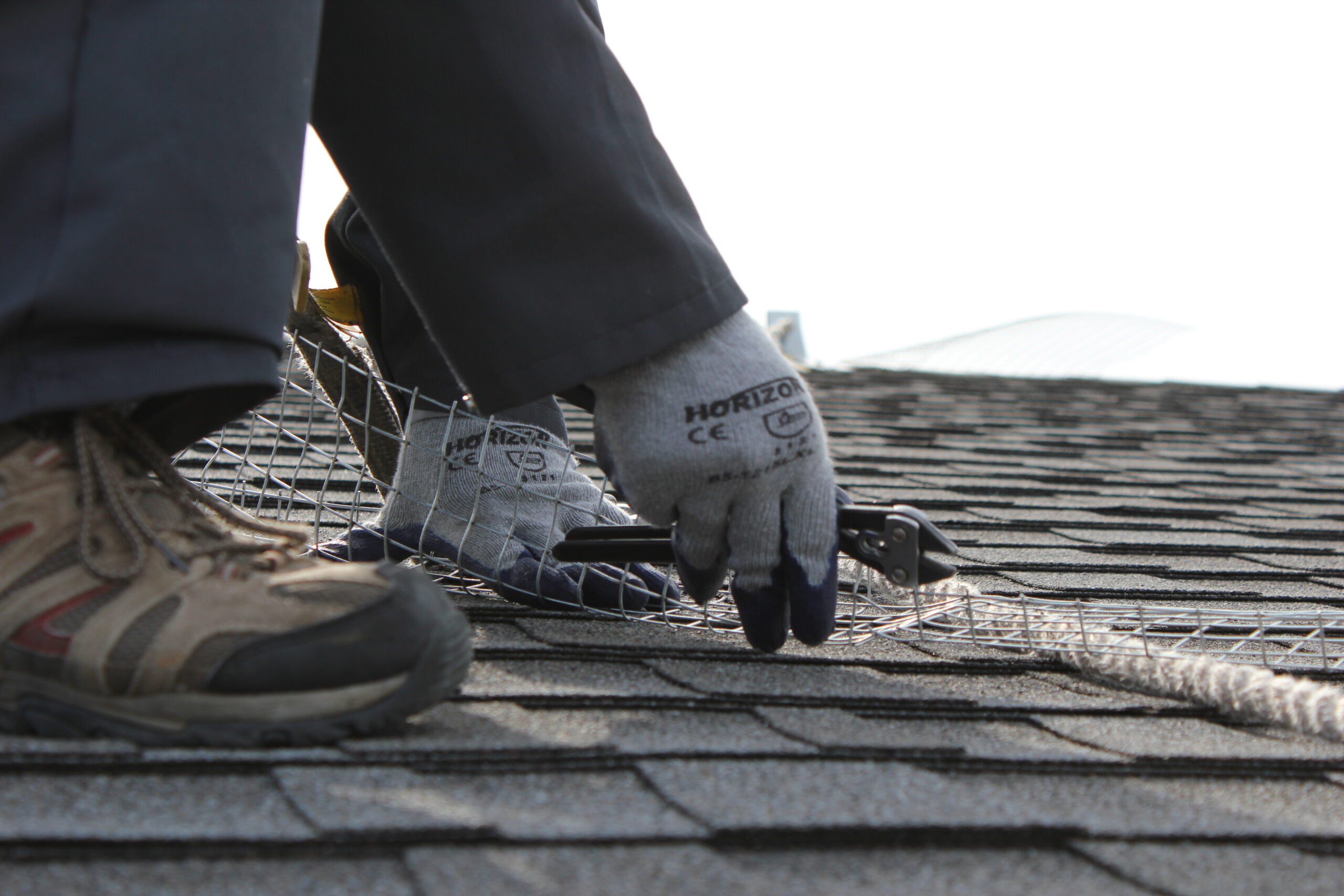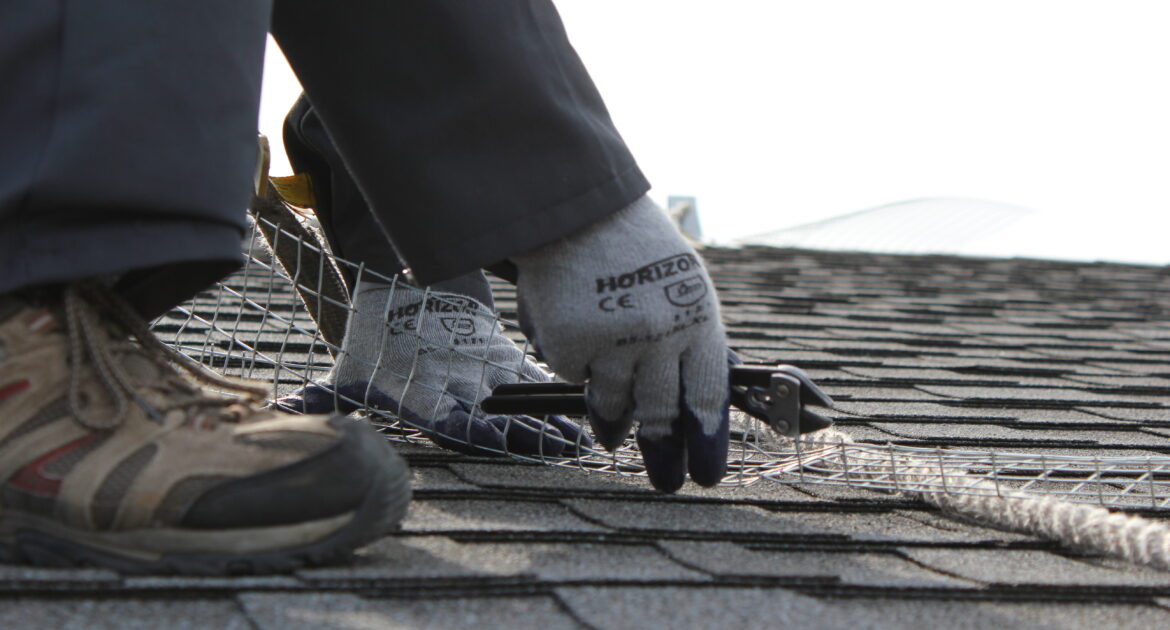Did you know that raccoons can squeeze through gaps as small as 4 inches? Your home provides warmth, safety, and food sources, but unfortunately, these comforts attract unwelcome wildlife. From curious squirrels to determined raccoons, animals often use doors, windows, and other entry points to sneak inside. Protecting your home is essential to prevent damage, preserve safety, and respect wildlife.
If you’re in Hamilton and facing challenges with wildlife intrusions, Skedaddle Wildlife’s expert team is ready to help. Specializing in humane wildlife removal and prevention, Skedaddle Hamilton ensures your home stays safe.
This guide will show you how to identify vulnerable entry points, seal them effectively, and avoid common mistakes homeowners make. Whether you’re sealing gaps yourself or calling in our Skedaddle technicians, these tips can help ensure your home stays a safe place for you—not for wildlife.
Why Wildlife Breaks Into Homes
Wild animals don’t typically mean harm; they simply follow their natural instincts to survive. Homes can provide an abundance of food, shelter, and warmth, making them an attractive option, especially as seasons change. Understanding why animals enter homes can help prevent unwanted encounters. Here are some common reasons why animals find their way indoors:
- Food Availability: Unsecured garbage bins, leftover pet food, crumbs, or even fruit trees near your home can attract scavengers such as raccoons, squirrels, or even ants. These animals are opportunistic and will take advantage of any easy food source they can find.
- Warmth and Shelter: As temperatures drop during the colder months, animals like bats, mice, raccoons, and even snakes look for warm, dry spaces to escape the cold. Attics, basements, and crawl spaces make ideal hiding spots for these creatures to stay safe and comfortable.
- Nesting Areas: Birds, rodents, and squirrels often search for small, enclosed spaces to build nests and raise their young. Your chimney, roof eaves, or even vents can serve as perfect nesting spots, offering protection from predators and the elements.
Animals are simply trying to survive, but knowing what attracts wildlife is the first step in keeping them out. Securing food sources, sealing entry points, and being proactive about home maintenance can go a long way in keeping your home wild-animal-free.
Top Entry Points to Watch Out For
Wild animals are incredibly resourceful and often find ways to exploit weak points in homes to gain entry or access to resources. They are attracted to warmth, food, and shelter, making our houses a prime target. Be mindful of these areas where animals commonly find vulnerabilities:
- Gaps Under Doors: Even minor gaps can serve as entryways for smaller animals like mice.
- Unsealed Windows: Cracks or poorly secured screens may invite squirrels or bats inside.
- Chimneys: A common nesting space for birds, bats, and raccoons if left uncapped.
- Vents and Eaves: Damaged or uncovered vents can become doorways for wildlife.
Simple Inspection Tips:
- Walk around your home and check for cracks, gaps, or damaged materials.
- Look for signs of scratching, chewing, or droppings near entry points.
How to Wildlife-Proof Your Doors and Entry Points
Taking steps to protect your home from wildlife is an important part of maintaining a safe, clean, and functional living space. From nimble mice to clever raccoons and even persistent squirrels, many creatures are adept at finding ways indoors. Fortunately, there are some simple DIY measures you can take to enhance your home’s defenses.
DIY Tips for Protecting Your Home Against Wildlife
- Install Door Sweeps or Weatherstripping: Many animals, including mice and snakes, can squeeze through gaps under doors. Weatherstripping or metal door sweeps are effective for sealing these entry points. Be sure to choose high-quality materials for long-lasting results.
- Use Reinforced Materials: Wildlife like raccoons, squirrels, and even skunks can chew through wood, plastic, and other soft materials. Reinforce vulnerable areas with durable solutions like steel mesh or metal flashing to make it harder for animals to breach entry points.
- Inspect Regularly for Damage: Look for signs of wildlife activities, such as gnaw marks, claw scratches, droppings, or loose materials around your doorframes, windows, and vents. Addressing damage early prevents small problems from leading to larger infestations or expensive repairs.
- Seal Cracks and Openings: Squirrels, bats, and even birds can exploit small cracks to get into attics, basements, and walls. Use caulking or expandable foam to plug these gaps. Be thorough in sealing corners, around wires, and near exterior pipes to eliminate potential access points.
While these DIY tactics can lower the probability of a wildlife intrusion, they often can’t address the full scope of the problem. Wild animals are creative, persistent, and highly skilled at bypassing barriers. Larger species like raccoons may use their strength to pry openings, while mice or bats can sneak into areas as small as a dime-sized hole. That’s why professional assistance is often necessary for comprehensive protection.
Why DIY Isn’t Always the Solution
Wildlife, ranging from rodents to larger animals like raccoons or opossums, bring different challenges to home protection. Mice can climb sheer walls, raccoons can open unsecured garbage bins, and bats can roost in the tiniest cavities. Even the most diligent homeowner may find that DIY methods only go so far.
For some cases, such as active infestations or when the source of wildlife access isn’t evident, you need expert intervention. Skimping on professional help can allow problems to persist, as missed entry points or incomplete solutions can lead to future invasions. Additionally, managing wildlife on your own can pose risks to safety and compliance with local regulations for the humane treatment of animals.
How Skedaddle Humane Wildlife Control Can Help
At Skedaddle Humane Wildlife Control, our approach is designed to cover all wildlife species and their unique behaviors. From diligent inspection to preventative strategies, we go beyond quick fixes to ensure lasting results. Here’s what sets our process apart:
- Comprehensive Home Inspection: Our experts conduct a top-to-bottom evaluation of your home to identify all current and potential entry points. Cracks, vents, soffits, chimneys, and hidden areas are all inspected to determine how wildlife may enter or damage your property.
- Safe and Humane Wildlife Removal: Whether it’s a family of raccoons in your attic or a snake in the crawlspace, we carefully and humanely remove all animals. Our methods prioritize the safety of the creatures while ensuring they cannot return.
- Sealing and Reinforcement of Entry Points: After removing the animals, we seal every discovered entry point using high-grade, chew-resistant materials like steel mesh or metal plates. These durable barriers ensure that animals cannot regain access.
- Sanitization and Clean-Up: Animals often leave behind dangerous contaminants such as droppings, fur, and nesting materials. We thoroughly clean and sanitize the affected areas to eliminate health risks and odors that might attract other wildlife.
- Prevention Strategies and Future Solutions: To stop wildlife from returning, we not only fortify your home but also offer guidance on reducing attractants. Tips may include securing garbage bins, trimming trees near your roofline, and installing chimney caps for extra defense.
Why Choose Skedaddle for Wildlife Control?
We understand that every wildlife situation is different. For over 30 years, Skedaddle Humane Wildlife Control has been helping homeowners across the country protect their properties from raccoons, squirrels, birds, bats, mice, and more. Our humane methods, technical expertise, and preventive measures ensure each job is handled responsibly and effectively.
Unlike quick, one-size-fits-all solutions, our personalized approach tackles the root of the problem to provide lasting peace of mind. When you work with Skedaddle, you’re not just solving a wildlife issue; you’re investing in the safety and durability of your home.
When to Call a Professional
Sometimes, DIY solutions just aren’t enough. Here’s when to call wildlife control experts like Skedaddle Humane Wildlife Control:
- If you identify an active infestation inside your home.
- When damage to entry points is extensive and requires repairs.
- If you’re unsure how to safely remove and relocate wildlife.
Hiring professionals ensures the problem is handled humanely and effectively, with solutions that prevent animals from returning.
Don’t Wait Until It’s Too Late
Wildlife-proofing your home starts with taking proactive steps. Sealing entry points and understanding what attracts animals to your property can make all the difference. Need expert advice or help with wildlife removal?
Contact Skedaddle Humane Wildlife Control today. With our experience in humane practices and home protection, we’re here to help you keep your home safe and wildlife-free.
FAQ’s
How can I tell if animals are trying to get inside?
Look for signs like claw marks, chewing, droppings, unusual odors, or scratching noises, especially at night.
What’s the best way to keep raccoons out of garbage bins?
Always use wildlife-proof garbage bins with locking lids. Position them away from doors or windows.
Can wildlife cause significant damage to doors?
Yes! Animals like raccoons and squirrels can chew wood or siding to widen gaps and gain entry. Address the damage quickly to avoid costly repairs.




